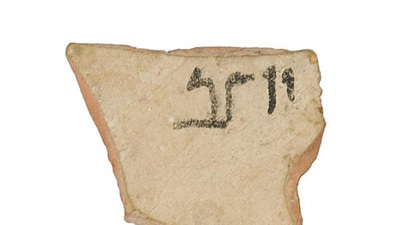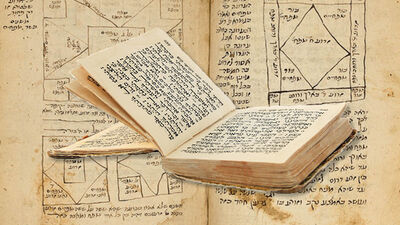In last week’s excellent article about Aggadah, Yael Shahar correctly wondered how it is possible that many people have studied Talmud -and continue to do so – without learning the Aggadic, i.e. the non-legal parts of the Talmud: “For it is the Aggadata that sets the Jewish legal tradition apart”, she writes. “The Talmud integrates legal issues with meta-legal issues. To the best of my knowledge, no other legal system manages to integrate psychological and moral issues so seamlessly with normative legal guidelines.”
This indeed is true. The implication is that unless the Aggadic part of the Talmud is very carefully studied, it is completely impossible to understand all the legal discussions and decisions of the Talmud. Moreover many halachic decisions run the risk of being wrong because they did not take the Aggadic-meta-halachic dimensions of these decisions into account.
It behooves us therefore to understand something of the very nature of the Talmud, which can perhaps help us to find the solutions to the upcoming Post Corona crisis.
What is the Talmud?
What is the Talmud all about?
This is not an easy question to answer because the Talmud does not fall into any of the literary or religious categories that we are used to. It contains a peculiar world of its own which is sui generis; there is nothing like it in secular or religious literature. Even calling it “literature” is a misnomer.
The first thing that must be emphasized is that the Talmud displays deliberate chaos. It is a highly unusual text, in which no topic is found in its logical place. Everything seems to be mixed together and appears as if it is introduced by “sheer coincidence ”, in a totally unexpected manner. The Talmud roams from one topic to another without any real inner logic, other than that one word gives rise to a whole new idea without warning us that it is coming.
It is like an ocean in which the waves come and go and overpower each other. They appear as gigantic breakers, building huge arguments and destroying them a moment later, before disappearing as if they had never been.
Really anything gets discussed and analyzed, sometimes in highly peculiar ways, even topics the student would never have thought of. Matters are discussed from every possible angle, sometimes with a surprising degree of imagination, psychological color, and even musical overtones. It reminds me of the beauty of classical music or jazz. It makes issues that look farfetched into matters of the greatest importance.
We find a long debate about damages, that borders on being tedious for those who do not have an analytical legal mind. And then a moment later, we learn how a woman is able to seduce her husband in the bedroom. Then a bit later, we are instructed in the need to pray with great intention. The motif here is clear: the Talmud is emphasizing that the experience of sexual intercourse has a lot to do with prayer and with a legal debate about finances, weaving them together in the most original – even humorous – ways.
All this is accompanied by Aggadic, meta-halachic, material, peppered with prophetic stories, highly unusual fables, philosophical insights, subconscious revelations, ethical advice, and harsh or subtle critique among the sages about one another’s competence.
It is an eruption, a thunderstorm, of limitless knowledge, feelings, and intellectual debate. Even if nobody else would ever imagine or think about a topic , you can be sure the sages did so! The famous cellist Pablo Casals once said that music is a “succession of rainbows” (Casals and the Art of Interpretation, David Blum, 1977). This is also true of the Talmud.
But in truth the Talmud is even more. It is all an enormous symphony which not even Johan Sebastian Bach, George Gershwin, or Arik Einstein could beat!
At Loggerheads
The Talmud is a basically an authoritative body of Jewish law and lore accumulated over a period of seven centuries (200 BCE-500 CE). It consists mainly of endless discussions and observations which took place in Israel and Babylonia (There are two Talmuds: the Jerusalem and Babylonian Talmud). The Babylonian Talmud, for years the more authoritative, was probably composed and edited by the great sage Rav Ashi around the year 500. It includes long discussions between about 400 outstanding sages who, for the most part, do not agree on nearly anything. It consists of two and a half million words and nearly 5,900 double-sided pages.
Many of the sages who are at loggerheads with each other, never actually met, as they lived in different centuries; they were deliberately set up against each other by a final editor. Most of the time these arguments were oral discussions, which were later written down, edited, and blended with other arguments with the intention “to have one’s cake and eat it” after all.
All this is written in its own language, mostly Aramaic and old Hebrew, in which most of the words are missing, a kind of telegram style, leaving it up to the student to use her/his imagination and creativity to fill in the gaps. There are no commas or periods, and it is not always clear where one sentence ends and a new one begins. It gives the impression of a maze, where one has great difficulty even finding the exit!
The outsider may have trouble making heads or tails of the Talmud. And then suddenly one gets the hang of it and suddenly realizes that all this chaos flows together into an unbelievable picture with hundreds of colors which harmoniously come together. That moment is a marvelous eye-opener and a great joy for the intellect and the human soul.
Greek Thinking and Talmudic Logic
The Talmud is entirely different from Greek thinking, in which everything has to follow by way of a methodological, often carefully thought-out process, which everything needs to fit into, often without yielding to emotions or feelings.
Still the Talmud has a logic of its own, even a sharp and piercing logic, cutting right through its own suggestions. It is constantly at loggerheads with itself. But at the same time it interacts with the inner emotional and subconscious struggle of human life.
In other words, the Talmud’s legal discussions constantly “network” with the world of Aggadah. In fact only a third of the (Babylonian) Talmud relates to Halacha, while almost two-thirds consists of midrash and Aggadah. This is crucial, as it offers a worldview that is of the greatest importance to a post Corona world.
I will discuss this next week.

Hot off the Press!
Cardozo on the Parashah. Shemot, the Book of Exodus
In this collection of essays, Rabbi Nathan Lopes Cardozo looks at the weekly Torah portion through the eyes of philosophy, contemporary controversies, and personal struggles. Written in his unique style, this book offers something for many different types of readers: laymen and clergy, full-time students and intellectually curious practitioners, Jews and non-Jews alike.





